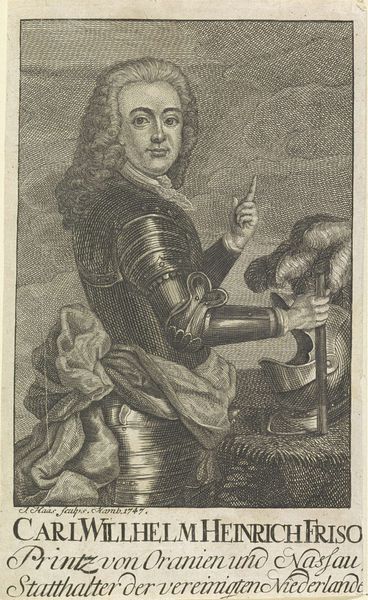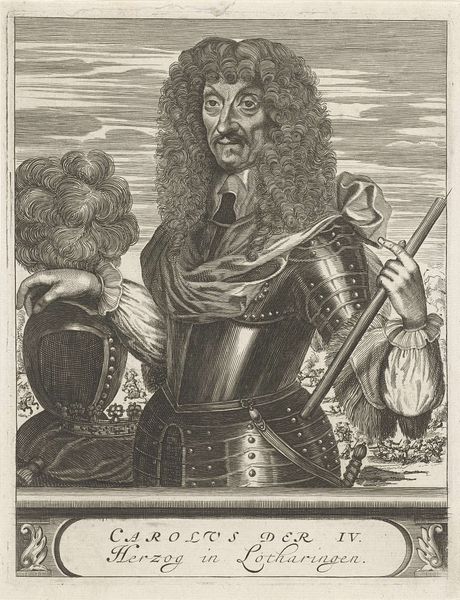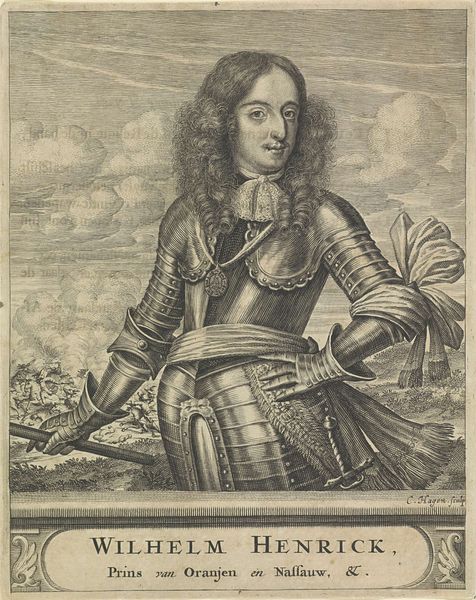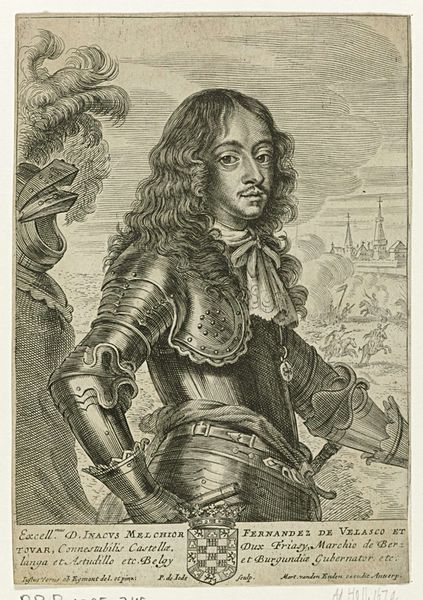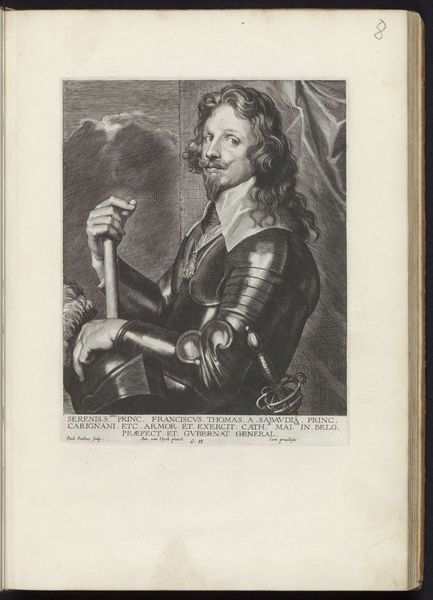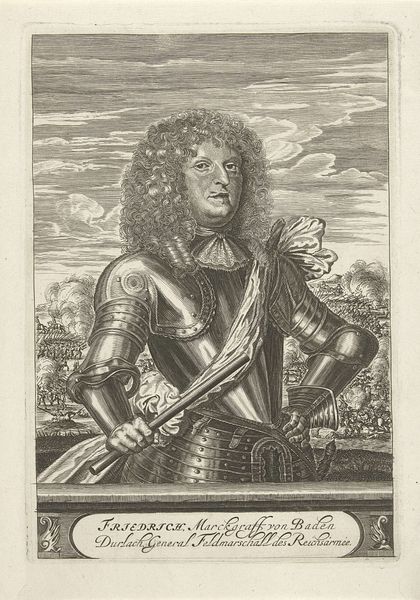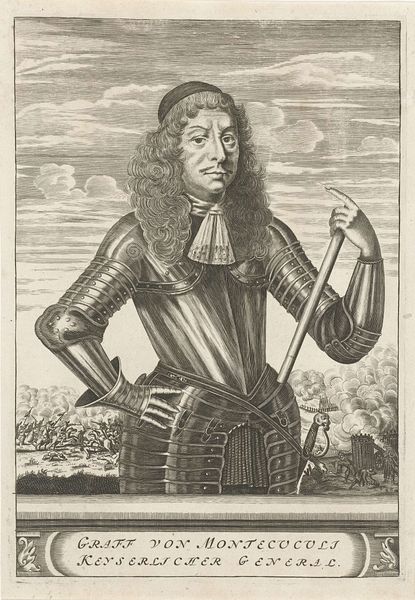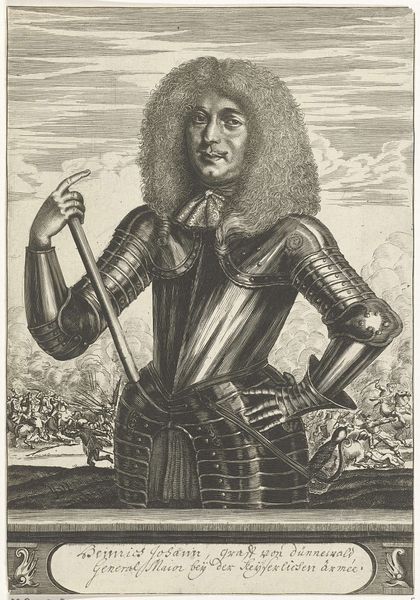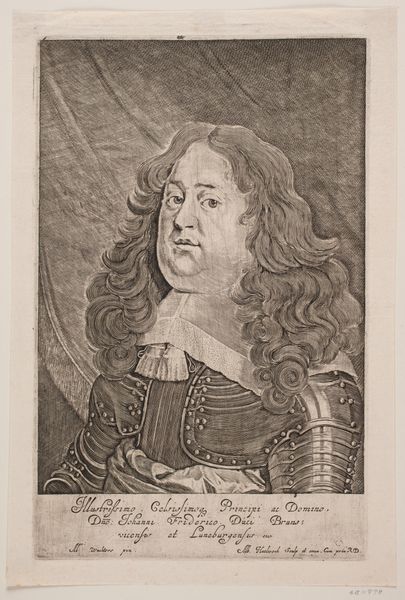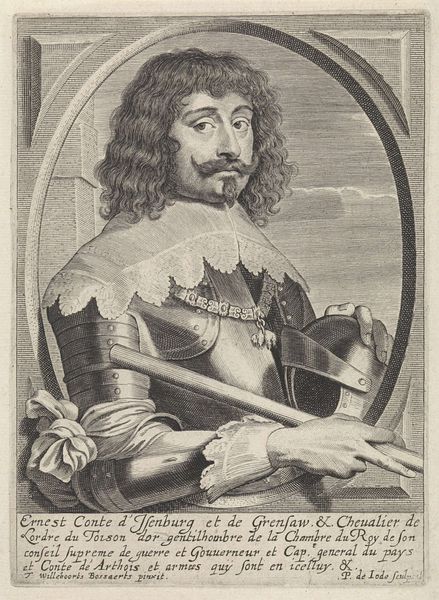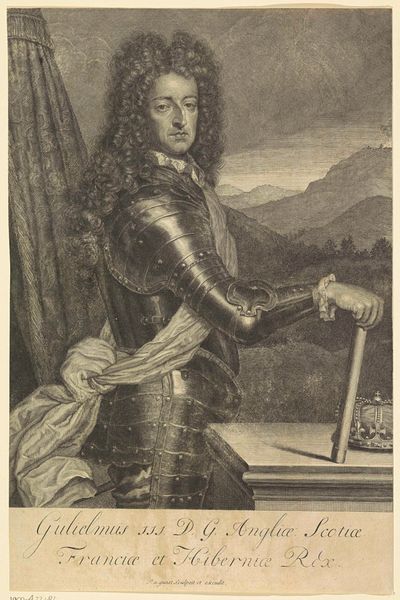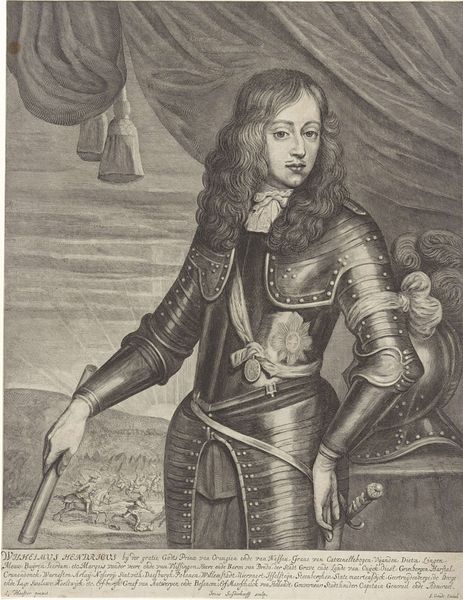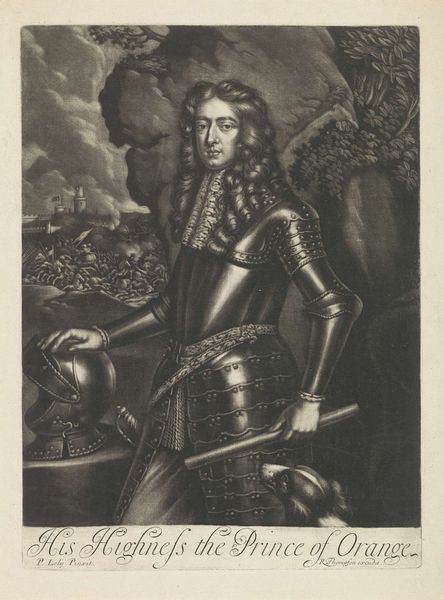
metal, engraving
#
portrait
#
baroque
#
metal
#
portrait drawing
#
history-painting
#
engraving
Dimensions: height 233 mm, width 162 mm
Copyright: Rijks Museum: Open Domain
Curator: Let's turn our attention to "Portret van Carl Gustaf Wrangel," an engraving dating from around 1663-1695, housed here at the Rijksmuseum. Editor: Immediately, the eye is drawn to the density of the etched lines—a palpable weight of the material depicted, especially in rendering his armor. It gives a stark and somewhat unsettling presence. Curator: Indeed, observe the strategic use of hatching and cross-hatching, the artist expertly manipulating light and shadow. It creates depth, lending three-dimensionality to a medium that’s inherently two-dimensional. Consider also the composition: the imposing figure of Wrangel juxtaposed against a distant, receding battle scene. Editor: It's quite remarkable when you consider how an engraver of this time managed to articulate so much social narrative. We can almost feel the labor involved, tracing the evolution of this copper or metal plate, a far cry from today’s digital portraiture! What was it like to commission and wear such ornate armor in reality? How did they move? What materials were accessible to the master artisan responsible for the design and tooling? Curator: Valid considerations. However, let's focus for a moment on Wrangel's expression: a detached, almost melancholic gaze. This emotional restraint, I think, speaks volumes. It communicates a stoic acceptance, perhaps of the burdens of command and power during times of constant conflict. Note the visual relationship created between the linear marks used for hair and similar etching employed to depict cloudscape in the upper right corner of the work. Editor: His detached gaze, yes. But the cost of the metal, the mines that produced it, and who oversaw that dangerous process also must be understood as critical components of this moment in geopolitical portraiture. It really prompts questions regarding material trade and technological capacity. Curator: Ultimately, this engraving presents us with a study in contrasts: delicacy and strength, precision and implied chaos. It encapsulates, I think, a complex and multi-faceted character, framed by a society on the cusp of profound change. Editor: For me, it’s the layered processes embodied within that sheet that speak volumes about the technological and societal factors that informed the artwork. An age where process and material had far greater meaning.
Comments
No comments
Be the first to comment and join the conversation on the ultimate creative platform.
